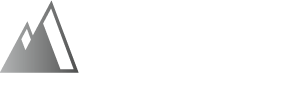Entrepreneurs seeking to purchase a small business have several avenues for financing the acquisition. Traditional bank loans, seller financing, and other funding sources offer diverse possibilities for structuring deals. Often, buyers negotiate using a combination of financing methods to secure favorable terms. A prominent option is leveraging the resources provided by the Small Business Administration (SBA), a U.S. government agency dedicated to supporting small businesses and entrepreneurs. The SBA facilitates financing through its 7(a), 504, and Microloan programs, which simplify the funding process for small businesses.
The SBA plays a crucial role in assisting entrepreneurs by offering a range of resources and support. In addition to educational opportunities and local assistance through SBDCs, their primary lending programs effectively distribute funds to small business owners. Let’s delve into the key SBA lending programs to understand how they support small businesses:
7(a) Loans: This is the SBA’s flagship loan program, designed to provide flexible financing for various business needs. 7(a) loans can be used for acquiring businesses, expanding operations, refinancing debt, purchasing equipment, and more. They feature lower down payment requirements and longer repayment terms compared to traditional bank loans.
504 Loans: This program offers long-term, fixed-rate financing aimed at promoting business growth and job creation. It’s used primarily for purchasing real estate, constructing new facilities, and acquiring machinery. 504 loans typically require lower down payments than conventional commercial real estate loans.
Microloans: These smaller loans, up to $50,000, are provided through SBA-approved intermediary lenders. They support small businesses with modest financing needs for working capital, inventory, equipment, and other essentials.
Streamlining Processes: Behind the scenes, the SBA has undertaken significant efforts to streamline its loan processes, resulting in a surge of applications in recent years. Key improvements include:
Simplified Loan Origination: The SBA has simplified and standardized the loan origination process, allowing lenders to use their existing credit policies for loans under $500,000, expediting approvals.
Fee Reductions: Fees for SBA loans under $1 million have been slashed, making financing more affordable for small businesses.
Technological Advancements: Enhanced technology solutions have been implemented to improve efficiency and reduce documentation requirements, facilitating faster loan approvals.
Expanded Access: The SBA has lifted restrictions on new Small Business Lending Company licenses and eliminated the franchise directory, broadening access to SBA financing for a wider range of businesses.
Support for Underserved Communities: Efforts have been intensified to ensure that minority entrepreneurs, including Black and women business owners, have increased access to SBA financing through programs like the 7(a) initiative.
These enhancements underscore the SBA’s commitment to bolstering small businesses and fostering entrepreneurship. If you’re considering buying a business and need financing, explore the SBA’s financing options. At Trustmark, we collaborate with multiple lenders to guide you through the process, leveraging these resources to turn your entrepreneurial aspirations into reality.

